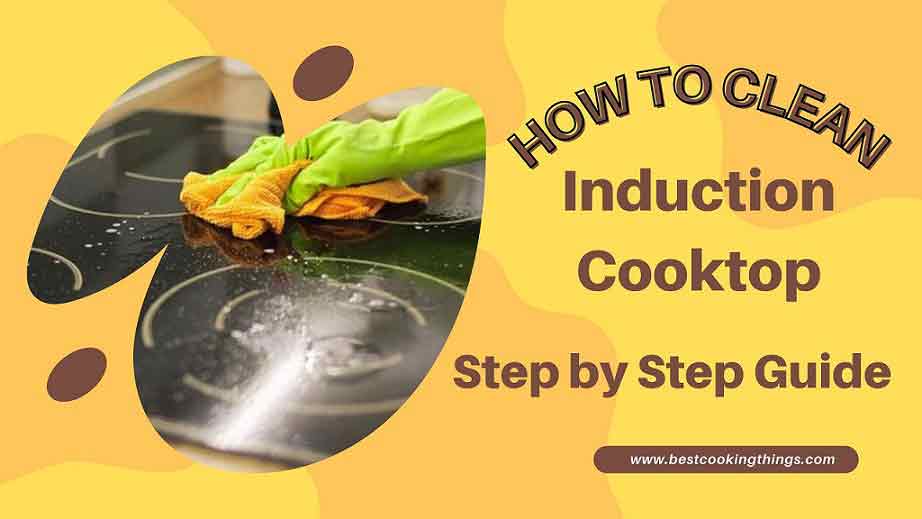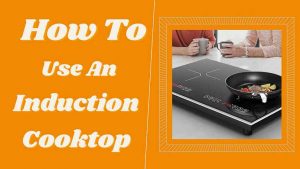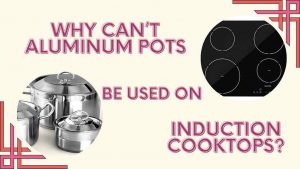Induction cooktops have become increasingly popular due to their efficiency, precision, and sleek design. To keep your induction cooktop functioning optimally and looking its best, regular cleaning is essential. In this article, we will guide you through the process of cleaning an induction cooktop effectively. From basic cleaning routines to deep cleaning methods, we’ll cover everything you need to know to maintain a sparkling clean cooktop.
Introduction
When it comes to kitchen appliances, the cooktop is one of the most frequently used surfaces. Over time, spills, splatters, and grease can accumulate, affecting both the cooktop’s performance and its appearance. Cleaning an induction cooktop not only ensures optimal functionality but also prolongs its lifespan.
Understanding Induction Cooktops
Before diving into the cleaning process, it’s essential to understand how induction cooktops work. Unlike traditional gas or electric cooktops, induction cooktops use electromagnetic fields to heat cookware directly, providing faster and more precise cooking. With no open flames or exposed heating elements, induction cooktops offer a safer cooking experience. Additionally, their smooth glass-ceramic surface is easy to clean and maintain.
Basic Cleaning Supplies
To clean an induction cooktop effectively, gather the following supplies:
- Soft microfiber cloth
- Mild dish soap
- Vinegar
- Baking soda
- Cooktop cleaner (specifically designed for induction cooktops)
- Razor scraper (for stubborn stains)
- Non-abrasive sponge or scrub brush
Having these supplies ready will ensure you can clean your induction cooktop thoroughly.

Preparing the Induction Cooktop
Before starting the cleaning process, it’s crucial to turn off and unplug the cooktop. This eliminates any risk of electrical shock and allows the cooktop to cooldown. Remove any cookware from the cooktop and set it aside. This will provide you with a clear and safe workspace for cleaning.
Daily Cleaning Routine
A daily cleaning routine for your induction cooktop will help maintain its cleanliness and prevent buildup. Follow these steps:
- Wipe down the cooktop surface: Use a soft microfiber cloth or non-abrasive sponge to wipe away any loose debris or spills from the cooktop surface. This will prevent them from hardening or becoming more difficult to remove later.
- Remove spills promptly: If you notice any spills or splatters during cooking, it’s important to remove them as soon as possible. Use a damp cloth or sponge to gently wipe away the spill. For stubborn or dried-on stains, create a mixture of equal parts vinegar and water, apply it to the stain, and let it sit for a few minutes before wiping it away.
- Dry the cooktop: After cleaning, make sure to dry the cooktop surface thoroughly with a clean, dry cloth. This helps prevent water spots and streaks.
Deep Cleaning Methods
In addition to your daily cleaning routine, it’s important to perform a deeper clean periodically. This will help remove any stubborn stains, grease buildup, or residue. Here are some methods to consider:
- Cooktop cleaner: Using a cooktop cleaner specifically designed for induction cooktops can be highly effective. Follow the manufacturer’s instructions, apply the cleaner to the cooktop surface, and gently scrub using a non-abrasive sponge or cloth. Rinse with water and dry thoroughly.
- Razor scraper: For stubborn stains or residue that won’t come off with regular cleaning methods, a razor scraper can be used. Hold the scraper at a slight angle and gently scrape the affected area. Be cautious not to apply too much pressure or scratch the surface. After scraping, clean the area with a cooktop cleaner and rinse well.
Remember to always read and follow the manufacturer’s instructions when using cleaning products or tools on your induction cooktop.
Cleaning Specific Induction Cooktop Parts
To ensure a thorough cleaning, pay attention to specific parts of your induction cooktop:
- Control panel: Wipe the control panel gently with a damp cloth or sponge. Avoid excessive moisture around the control knobs to prevent any damage.
- Knobs: Remove the knobs, if possible, and wash them separately in warm soapy water. Dry them thoroughly before placing them back on the cooktop.
Removing Stubborn Stains and Residue
Despite regular cleaning, you may encounter stubborn stains or residue on your induction cooktop. Here are some additional tips to help remove them:
- Baking soda paste: Create a paste by mixing baking soda with a small amount of water. Apply the paste to the stained area and let it sit for a few minutes. Gently scrub the area with a non-abrasive sponge or cloth, then rinse and dry.
- Vinegar and water solution: Combine equal parts vinegar and water in a spray bottle. Spray the solution onto the stained area and let it sit for a few minutes. Wipe away the solution with a damp cloth or sponge, then dry thoroughly.
Remember to test any cleaning solution or method on a small, inconspicuous area of your induction cooktop before applying it to the entire surface.
Maintenance Tips
To keep your induction cooktop in optimal condition, consider the following maintenance tips:
- Avoid abrasive materials: Avoid using abrasive cleaners, scrub brushes, or steel wool on your induction cooktop, as they can scratch the surface. Stick to non-abrasive materials and gentle cleaning techniques.
- Regularly clean vents: Induction cooktops often have vents located on the underside or sides. These vents help dissipate heat generated during cooking. Use a soft brush or vacuum attachment to remove any dust or debris from the vents regularly.
- Keep it dry: After cleaning, make sure the cooktop surface is completely dry to prevent water spots or mineral deposits. Use a clean, dry cloth to wipe away any moisture.
- Avoid harsh chemicals: Avoid using harsh chemicals or abrasive cleaners that can damage the cooktop surface. Stick to mild dish soap, vinegar, or specifically designed cooktop cleaners.
- Protect from heavy objects: Be cautious when placing heavy objects, such as pots or pans, onto the cooktop surface. Dropping or dragging heavy items can cause cracks or damage the glass-ceramic surface.
By following these maintenance tips, you can ensure the longevity and optimal performance of your induction cooktop.
Safety Considerations
When cleaning an induction cooktop, it’s crucial to prioritize safety. Here are some safety considerations to keep in mind:
- Turn off and unplug: Always turn off and unplug the cooktop before cleaning. This eliminates the risk of electric shock and ensures your safety.
- Avoid water near electrical components: Induction cooktops have electrical components underneath the glass-ceramic surface. Avoid getting water or cleaning solutions near these components to prevent damage or malfunctions.
- Allow the cooktop to cool: Before starting the cleaning process, make sure the cooktop has cooled down. Touching or cleaning a hot surface can cause burns or injuries.
- Protect yourself: Wear protective gloves when using cleaning solutions or tools to prevent skin irritation or chemical exposure.
Troubleshooting
During the cleaning process, you may encounter some common issues. Here are a few troubleshooting tips:
- Streaks or smudges: If you notice streaks or smudges after cleaning, it may be due to improper drying. Use a clean, dry cloth to buff the surface until it’s shiny and streak-free.
- Persistent stains: For stubborn stains that won’t come off with regular cleaning methods, consider contacting the cooktop manufacturer for specific recommendations or professional assistance.
- Scratches: If you notice minor scratches on the surface, you can try using a cooktop cleaner specifically designed to minimize the appearance of scratches. Follow the product instructions and apply the cleaner gently.
Remember, if you encounter any significant issues or concerns, it’s best to consult the cooktop’s user manual or contact the manufacturer for guidance.
Things Not to Use For Cleaning Induction Hobs

Induction cooktops are great for fast and easy cooking, but they need to be taken care of too!
However, while cleaning the induction cooktop, do not use the included materials.
- Steel wool
- Ferrous scrubbing brushes (brushes with steel bristles)
- Abrasive cloth
- Coarse scrubs
- Knife or sharp tools (as they can damage the glass surface)
- Flammable materials
- Chlorine-based bleaching agents and Ammonia (as they can permanently stain the cooktop)
Also Read: How Efficient Are Induction Cooktops
Frequently Asked Questions (FAQs)
Can I use abrasive cleaners on my induction cooktop?
No, it’s best to avoid abrasive cleaners as they can scratch the cooktop surface. Stick to non-abrasive cleaners and gentle cleaning methods.
Can I use metal scrubbers to remove stubborn stains?
No, metal scrubbers can scratch the glass-ceramic surface. Instead, use non-abrasive sponges or cloths along with appropriate cleaning solutions.
How often should I deep clean my induction cooktop?
Deep cleaning is recommended once a month or as needed, depending on the level of dirt and stains.
Can I clean the control knobs in the dishwasher?
It’s best to check the manufacturer’s instructions for your specific cooktop model. Some knobs may be dishwasher safe, while others may require hand washing.
Is it normal for my induction cooktop to emit a slight odor during cleaning?
Yes, it’s normal for induction cooktops to emit a slight odor when cleaning certain stains or residues. Ensure proper ventilation and allow the cooktop to air out after cleaning.
Is it necessary to use a special cleaner for induction cooktops?
There is no one-size-fits-all answer to this question, as it really depends on how dirty your induction cooktop is and how often you use it. If you clean the cooktop after each use, you don’t need to worry about using special cleaners.
However, if it seems that the cooktop is getting dirty over time or if it is difficult to keep clean, then you can think of some special cleaners and you can clean it by following our cleaning methods above.
Can I just use water to clean my induction cooktop?
Unfortunately, water will not work as a good cleanser for an induction cooktop. To clean and maintain your induction cooktop properly, you need to use a special kind of cleaner that is specifically designed for this type of appliance. Special cleaning agents like vinegar, baking soda, and dish soap won work well on induction cooktops. But if you regularly clean your induction cooktop after use, then you don’t have to think so much about induction cooktop cleaning.
How to remove white hard water stains from an induction cooktop?
To solve this problem, you just need to clean with dish soap and water. However, after cleaning, wipe thoroughly with a clean cloth to remove white hard water stains from the induction cooktop. And if you clean it regularly, this stain will not fall again.
Conclusion
Cleaning an induction cooktop is anecessary task to ensure its optimal performance and maintain its aesthetic appeal. By following the proper cleaning techniques and using the recommended supplies, you can keep your induction cooktop in excellent condition.
Remember to incorporate daily cleaning routines into your kitchen maintenance habits. Wiping down the surface, removing spills promptly, and drying the cooktop after each use will prevent stains and buildup.
For deeper cleaning, utilize cooktop cleaners designed specifically for induction cooktops. These cleaners are effective in removing stubborn stains and residue. Additionally, consider using gentle methods like baking soda paste or vinegar and water solutions for natural and safe cleaning.
Maintaining specific parts of the cooktop, such as the control panel and knobs, ensures their longevity and functionality. Be cautious when handling the cooktop’s delicate components and avoid abrasive materials that may scratch or damage the surface.
Prioritize safety by turning off and unplugging the cooktop before cleaning. Avoid water near electrical components, allow the cooktop to cool down, and use protective gloves when necessary.
If you encounter any issues or have questions about cleaning your induction cooktop, refer to the manufacturer’s instructions or contact their customer support for assistance.
In conclusion, regular cleaning and proper maintenance will keep your induction cooktop looking pristine and operating efficiently for years to come. Enjoy the benefits of a clean and well-maintained induction cooktop in your kitchen!
You Get More at “Best Cooking Things”
So stay with us
|
|
|
|
|
|
|
|
|

Alessandra Sarria is not only the creator but also a writer and editor of Best Cooking Things. He does most of the cooking at home. His friends and family members look forward to eating the delicious creations. He loves to cook. So he often writes about the problems or questions that arise while cooking at home. So that others do not get into trouble. One of the best ideas about which cooking tools are best can be found in his writings. From his own experience, he highlighted how different cookwares are.














Pingback: How to Choose the Right Induction Cooktop for Your Home - BCT
Pingback: The Pros and Cons of Using an Induction Cooktop | Should You Switch to Induction Cooking?
Pingback: How to Clean Frigidaire Induction Cooktop? - BCT
Pingback: Why Can’t Aluminum Pots Be Used on Induction Cooktops? – Best Cooking Things
Pingback: How Efficient Are Induction Cooktops | Proven By Laboratory Testing